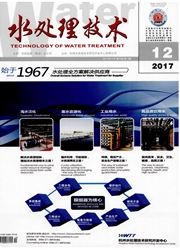

 中文摘要:
中文摘要:
以沿海电厂汽轮发电机组抽汽作为热源,针对反渗透(RO)和低温多效蒸馏(LT-MED)海水淡化技术各自的特点,提出2种水电联产海水淡化方案,并进行性能分析:1种是传统的蒸汽压缩喷射器(TVC)与低温多效蒸馏系统结合的MED-TVC方案;另1种是利用电厂汽轮机抽汽余热能发电驱动反渗透膜,通过热膜耦合技术将低温多效蒸馏与反渗透海水淡化产水集成的RO-MED方案。结合某实际火电机组已经运行的海水淡化项目,建立数学模型,对2种方案的淡水产量进行了比较分析。结果表明,RO-MED方案的淡水产量约为38.26 kt/d,远大于MED-TVC方案11 kt/d的产水量。但受投资成本、运行成本、安全性等条件的制约,在实际生产中还需要依据具体情况进行选择。
 英文摘要:
英文摘要:
Used coastal power plant generating unit extraction steam as heat source, aimed at the different characteristics of reverse osmosis (RO) and low temperature multi-effect distillation (LT-MED) desalination, proposed two co-generation desalination systems and analyzed the performance. One kind of systems was the traditional system (MED-TVC) that combine thermal vapor compressor (TVC) with LT-MED, another one was Hybrid MED/RO desalination system which integrated LT-MED with RO through thermal-membrane coupling technology, and using the waste heat of power plant turbine extraction steam to generation power ,then driving RO desalination. According to a practical desalination project with operation of thermal power generating unit, mathematical model was established to compare and analyze the flesh water yield of the above two systems. Results showed that, the fresh water yield of RO-MED system was 38.26 kt/d, which is much larger than MED-TVC system (11 kt/d). While because of the limitation of investment cost, operating costs, security and other conditions, the system should be selected by the actual situation in practical production.
 同期刊论文项目
同期刊论文项目
 同项目期刊论文
同项目期刊论文
 期刊信息
期刊信息
